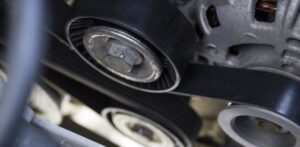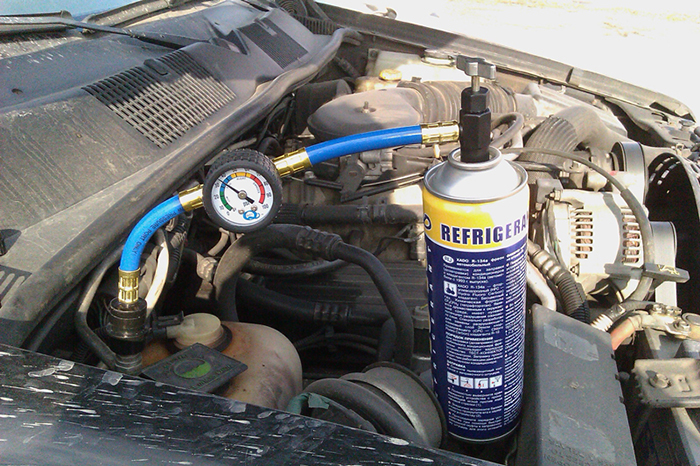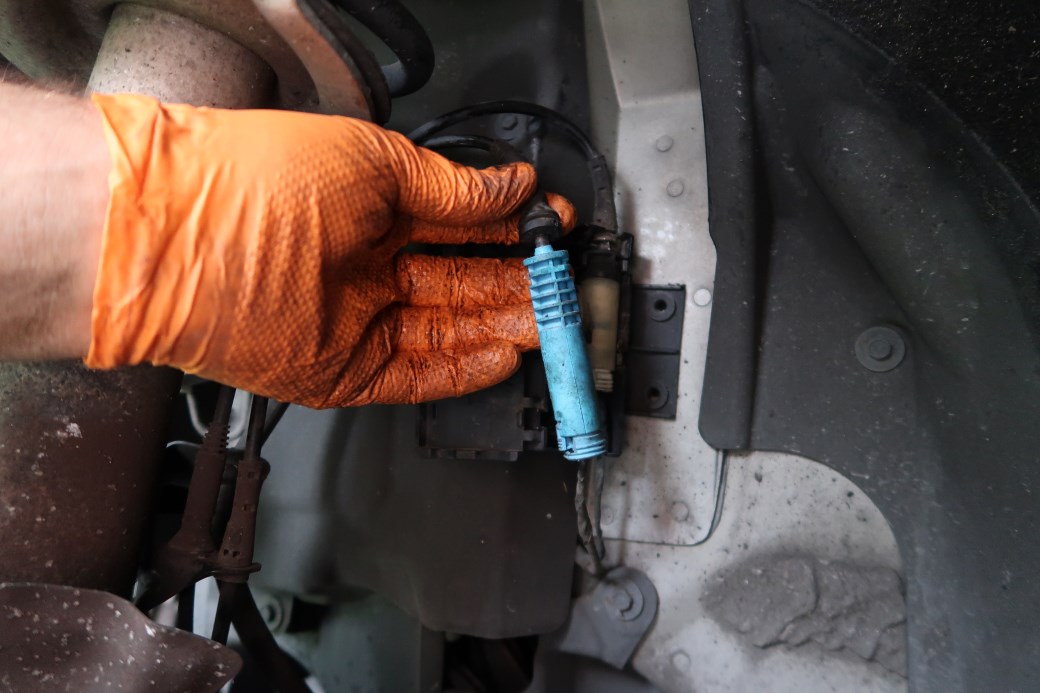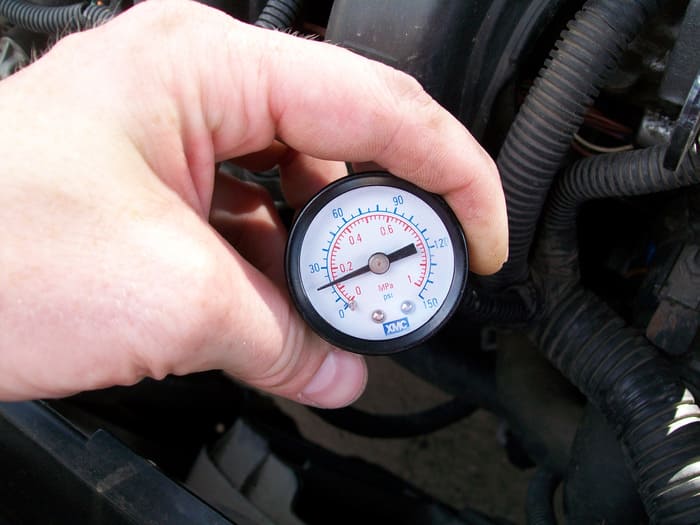 When a belt tensioner starts to fail, it’s only a matter of time before the belt itself breaks. The belt is what connects the engine to the various pulleys that drive the car’s accessories. If the belt snaps, the engine will shut down and all power to the vehicle will be lost. In addition, a broken belt can cause serious damage to the engine itself. Given the importance of the belt, it’s no surprise that a faulty belt tensioner is a serious problem.
When a belt tensioner starts to fail, it’s only a matter of time before the belt itself breaks. The belt is what connects the engine to the various pulleys that drive the car’s accessories. If the belt snaps, the engine will shut down and all power to the vehicle will be lost. In addition, a broken belt can cause serious damage to the engine itself. Given the importance of the belt, it’s no surprise that a faulty belt tensioner is a serious problem.
Most belt tensioners are located at the front of the engine, near the pulley system. They’re usually made of metal and contain a spring-loaded arm with a pulley on one end. As the name suggests, their job is to keep the belt tight as it passes around the pulleys. Over time, however, the tension can start to wear out. The arm can become weak, and the pulley may become misaligned. As a result, the belt will start to slip or even break.
If you suspect that your belt tensioner is failing, it’s important to have it checked out by a mechanic as soon as possible.
What happens if I have a bad belt tensioner?
If your belt tensioner is bad, it can cause a lot of problems. The most common problem is that the timing belt will fail. This can lead to big problems because the timing belt controls the timing of the engine. If it fails, the engine can teleport back and forth, which can cause a lot of damage to the engine. In some cases, the belt can also break, which can cause the engine to stall. In other cases, the timing belt can slip, which can cause the engine to run slower than normal. In any case, if you have a bad belt tensioner, it’s best to get it fixed as soon as possible.
What are the most typical indicators of a bad belt tensioner?
The bearing inside a belt tensioner is what allows the pulley to rotate on its axis. Over time, this bearing can become worn out, which will cause the performance of the tensioner to suffer. In some cases, you may even hear noises coming from the tensioner as it tries to do its job. If left unchecked, this issue can eventually lead to damage to other parts of the engine.
The serpentine belt comes off during the start-up procedure
The serpentine belt is the main belt that drives all of the accessories in your car. If it comes off, the engine will shut down and you will lose power to the water pump, alternator, power steering, and other systems. This can be a very dangerous situation, so it’s important to be aware of the signs that your belt may be coming off. If you notice any squealing or grinding noises coming from the engine bay, it’s a good idea to have your car checked out by a mechanic. In some cases, the belt may even come off during startup, which can lead to serious engine damage.
The engine overheats
One of the most common signs of a bad belt tensioner is an overheating engine. The water pump is driven by a serpentine belt, and it circulates coolant through the engine to keep it from overheating. If the belt slips or breaks, the water pump will not be able to do its job, and the engine will overheat. In some cases, this can even lead to engine damage.
The car stalls
Another common symptom of a bad belt tensioner is engine stalling. This can happen because the alternator belt is not tight enough, and it causes the battery to drain. As the battery drains, the car’s electrical system will start to fail, and eventually, the engine will stall.
The check engine light comes on
In some cases, a bad belt tensioner can trigger the engine check light. This is because the alternator is not charging the battery properly, and the car’s computer is detecting a problem.
Belt misalignment
If the belt tensioner is failing, it can cause the belt to become misaligned. This means that the belt will not be able to sit properly on the pulleys, and it will eventually come off. This can lead to serious engine damage, so it’s important to be aware of the signs of misalignment.
Failure of the tension damper
The tension damper is a small device that is used to keep the belt tight. If this device fails, it can cause the belt to become loose and eventually come off. This can lead to serious engine damage, so it’s important to be aware of the signs of failure.
Belt wear/mating surface damage
Over time, the belt can become worn out or the mating surfaces can become damaged. This can cause the belt to slip or come off entirely. This can lead to serious engine damage, so it’s important to be aware of the signs of wear and tear.
Belt slip on the alternator pulley
In some cases, the belt can slip off the alternator pulley. This can cause the battery to drain, and eventually, the engine will stall.
Belt squeal on startup
If the belt is loose, it can cause a squealing noise on startup. This is because the alternator is not turning correctly, and the battery is not being charged properly.
If you notice any of these signs, it’s important to have your car checked out by a mechanic as soon as possible. Don’t ignore the problem, because it will only get worse over time and could eventually lead to serious engine damage.
Why is it a bad idea to drive with an unbalanced belt tensioner?
Your car’s alternator, power steering, and water pump are all driven by belts that are turned by the engine’s crankshaft. The alternator belt is especially important because it generates the electricity that your car needs to run its electrical systems and recharge the battery. If the alternator belt fails, your car will quickly lose power and come to a stop. The tensioner is a pulley that applies tension to the alternator belt (and other belts) to keep it tight. If the tensioner fails, the belt will become loose and could slip off the pulleys. This would cause your alternator (and other systems) to fail. Driving with a bad alternator belt tensioner is a mistake because it could lead to serious problems. Symptoms of a bad alternator belt tensioner include squealing noise from the engine bay, difficulty starting the engine, dimming headlights, and strange electrical issues. If you notice any of these symptoms, have your car checked out by a mechanic as soon as possible. Don’t ignore the problem because it could lead to more serious issues down the road.
Is it possible for the belt tensioner to make noise?
A belt tensioner is a component that is used to keep the drive belt tight. The drive belt is responsible for transferring power from the engine to the accessories, such as the alternator, air conditioning compressor, and power steering pump. A squeaking noise from the belt area can be caused by a loose or damaged belt, but it can also be caused by a failing belt tensioner. Belt tensioners are designed to maintain consistent tension on the drive belt, but they can fail over time due to components fatigue or heat damage. In some cases, a failed belt tensioner will cause the drive belt to come off, which can result in loss of power to the accessories.
Final thoughts
As you can see, a bad belt tensioner can cause a lot of problems. If you detect any of the indications, it’s essential to have your automobile checked out by a mechanic as soon as possible. Ignoring the problem may result in significant engine damage.


